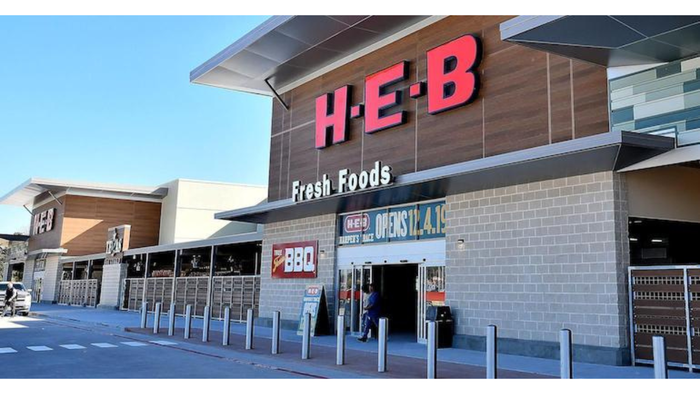Powering forward
January 1, 2018
Following a tumultuous few years, the battery category appears to be back on course and primed for growth. By Craig Levitt They say “patience is a virtue.” For retailers, when it comes to the battery category, patience may also be profitable. However, they also say “he who hesitates is lost.” So what is a retailer to do? In regard to batteries, a focus on consistent execution of category fundamentals may be the best answer for grocery retailers. The battery category is undergoing changes as the definition of personal and portable power continues to evolve and expand. Industry observers say batteries, which used to primarily consist of replaceable round cell batteries, will encompass many more segments and satisfy consumer needs in the future. Manufacturers say retailers—particularly food retailers—that begin taking a broader view of the category now will reap the benefits down the line. Manufacturers also stress that the transformation is not going to occur overnight. “Stay the course, stay committed, stay disciplined,” says Lou Martire, vice president, trade development for St. Louis-based Energizer. “Don’t expect too much too soon and don’t overreach. It’s all about taking the smart balanced investment and taking the long view.” There is a lot at stake for retailers. With 84% of households buying batteries last year, total dollar sales registered around $4 billion as more than 5 billion batteries were sold. As economic conditions improve and use of medium- and high-drain devices continues to grow, observers say that it is realistic to expect the battery category to reach $8 billion in sales in the next 10 years. Some industry observers are concerned that several supermarket chains have lost some faith in the category and are taking a wait-and-see attitude. Many manufacturers emphasize that if supermarkets remain tepid to the category’s changes, they jeopardize its strong incremental sales and high margins and that business may end up elsewhere. Deciding to just be a player in the battery category is not going to boost sales for supermarkets. However, those that dedicate the proper time and space to the category will likely see results. As with any other category, consistent execution of category fundamentals combined with understanding the shopper is critical to success. Prompting sales Observers note that given their broad distribution and high household penetration, batteries are unique in that they are a prompted purchase—less than 30% of shoppers put batteries on a written list, even when they plan the purchase ahead of time. Therefore, having batteries in the right location with visible merchandising helps prompt shoppers to see, remember and buy. To prompt shoppers effectively, observers suggest grocers maintain permanent merchandising for the battery home, checkout and additional stocking locations. They say the battery home should be in a high-traffic, front-of-store location that is visible to passing shoppers, as studies show that grocery retailers that have moved their battery section from an inline, back of store location to a front of store endcap have seen category sales grow as much as 20%. Manufacturers add that batteries should also be located at every checkout lane as 74% of battery buyers claim this is the primary location in store where their purchase occurs. “Permanent secondary merchandising for batteries should be located next to categories that index strongly with shoppers that also buy batteries, such as pharmacy for hearing aid batteries or the electronics area for performance batteries,” says Martire. “Promotional secondary merchandising should focus on high-traffic locations that drive unplanned purchases.” Studies continue to bear out that shoppers expect to find a full assortment of battery brands and types in the grocery channel. The battery home should carry the retailer’s full assortment, since shoppers expect all of the products to be in one location. Manufacturers say assortments beyond the home location can be tailored to the demographic of the shoppers in particular sections. A rapidly growing assortment opportunity is electronic, or button cell, batteries. From remote controls to glucose monitors, more and more devices are using these batteries every day. “It all depends on the retailer and consumer,” notes Lionel Lalonde, vice president of sales for Barrie, Ontario, Canada-based LEI Electronics, manufacturers of the Eco-Alkalines Batteries. “[The specialty battery category] is a perfect case of where retailers have to know their customer. For example, if you have seniors, you have got to be into button cells. It’s all about adapting to consumer needs.” Given the characteristics of specialty batteries—high margin, low price sensitivity and underdeveloped in grocery—observers say this segment represents an excellent opportunity for grocery retailers to grow both top line sales and bottom line profit. Observers say the keys to success are carrying a full range of sizes, stocking multi-packs rather than singles and merchandising at the battery home and in the pharmacy. Another assortment opportunity is properly balancing space for C and D batteries. As devices continue to get smaller, the number of devices using C and D batteries has significantly decreased. Observers say that as a result, the share of shelf dedicated to these larger batteries is disproportionate to the share of their sales at many retail outlets. “Shoppers want choices and help choosing,” says Martire. “Shoppers report that having a full range of brands and product choices is important to them. At the same time, they say the battery category is confusing and hard to shop at many retailers. An effective approach uses organization and communication to help shoppers choose while retaining a complete assortment of brands and products.” Done correctly, Martire says this approach builds the retailer’s brand equity with the shopper due to the improved shopability. It can also drive sales by creating more trade-up and multiple purchases. “Some retailers have experienced up to 7% increase in sales by including the right communication at the battery home,” he adds. Restoring value While it may seem odd to highlight price and promotion in the context of “right message,” observers say retailers’ price and promotion strategies send a message to shoppers every day. This is a potential area of concern for some manufacturers. Suppliers say that significant category dollars have been lost due to trade down and excessive discounting on promotion, adding that there is an opportunity to restore value by increasing the average price per battery sold. They say that, with regard to everyday pricing, maintaining appropriate price gaps is critical. The strategy being that if the gap is too wide between segments, shoppers will trade down to the lower-priced segment without increasing purchase quantity, thus driving fewer dollars. If the gap is too wide within a segment—such as larger packs sold at significant discount—consumers will pantry load, reducing sales and profit over time. On the promotional side, observers say strategies should emphasize increasing lift while reducing cannibalization of base volume. Promotions that allow consumers to feel as if they are having a positive effect on their communities are also gaining popularity. Bethel, Conn.-based Duracell, a brand of Cincinnati-based Procter & Gamble, launched its Power Those Who Protect Us promotion in January. It is a joint effort between Duracell and the National Volunteer Fire Council (NVFC) to help equip the nation’s volunteer fire force with supplies they need to help power the everyday tools and life-saving devices. For each specially marked battery-pack consumers purchase, Duracell will make a donation to the nation’s volunteer firehouse. Kurt Iverson, Duracell spokesperson, says the goal is to provide the volunteer community with more than 20 million batteries for the 23,000 volunteer fire departments across the country. “We have found that when consumers get a hold of a cause like this, when a purchase helps their local fire fighters, that creates an additional motivation for them to buy,” says Iverson. “Naturally they associate that with the retailers they are buying from.” Energizer is also investing in ways to help sell the category. Its new communication platform—now that’s positivenergy—is designed to connect Energizer and the category as a whole to consumers and their desire for performance plus responsibility. Additionally Energizer is helping preserve the National Parks by supporting the National Parks Foundation and providing consumers an opportunity to visit a national park for free. Consumers may choose to donate the value of the admission to the National Parks Foundation instead. Energizer is also a supporter of Susan G. Komen for the Cure as well as firefighters across the country through the Change Your Clock Change Your Battery program, distributing educational materials and free batteries to local fire departments. Beyond events that drive consumer value and excitement, Martire says the platform includes new packaging that is intended to communicate clear and unique consumer benefits, as well as new advertising that connects to and reinforces the message delivered on pack. It also offers new promotions that drive sales for retailers while delivering value, excitement and the chance to make a difference for consumers. Energizer Shopper-based Solutions is a retail merchandising strategy grounded in shopper insight that is intended to drive trade-up and multiple purchases by making it easier for shoppers to find the best battery to meet their needs. “Energizer also offers our ‘Category Insight’ program in which we continue to invest in research and testing to better understand device trends, consumer shopper attitudes and behaviors and category strategies that maximize dollar performance,” says Martire. Eco-friendly power The battery category is embracing the eco-friendly movement. Some industry observers say increasing consumer awareness and desire to purchase earth-friendly, sustainable products is rubbing off on the batteries market. However, what makes a battery earth friendly goes far beyond the buzz words of recycling and rechargeable. Life-cycle analysis by independent third parties shows that often the best option depends on multiple factors—including the device and how frequently it is used. For example, in high-drain, frequently used devices such as digital cameras, Lithium batteries would be a more “eco-friendly” choice than standard alkaline. This might be reversed in lower-drain, less frequently used devices. John Yannuzzi, vice president for corporate brand for Rancho Cucamonga, Calif.-based PowerMax Battery USA, says its Insta-Use product line fits the earth-friendly movement, as it is ready-to-use, holds multiple charges and is long lasting. While rechargeable options are gaining favor, some consumers that typically buy rechargeable batteries are beginning to turn to other more eco-friendly alternatives. The feeling among some is that while rechargeable batteries may last longer than traditional items, when disposed of, they are still harmful to the planet. “Our Eco Alkalines Batteries have created incremental sales for retailers by drawing in new customers that are interested in buying eco-products,” says Lionel Lalonde, vice president of sales for Barrie, Ontario, Canada-based LEI Electronics, manufacturers of the Eco-Alkalines Batteries. “We don’t see a significant amount of cannibalization against the major brands, and the demand is there. People want to buy eco-products that are not over-priced, are of similar quality to branded and have a strong eco story behind them.” LEI Electronics has also revamped its packaging, ensuring that all materials, down to the product brochures, are eco-friendly while also telling the eco-friendly story. Lalonde understands that it may take some time for consumers to warm up to eco-friendly batteries, but he says the company is committed to investing in its brand. That investment includes extensive advertising and support at the retail level. Energizer fully supports and actively leads efforts that reduce the environmental impact of the battery category, says Lou Martire, vice president, trade development for St. Louis-based Energizer, adding that Energizer was the first battery manufacturer to remove mercury from standard alkaline batteries. “Rather than keeping the technology to ourselves, which would have created a significant competitive advantage, we shared it broadly within the industry,” says Martire. “As industry leaders, we understand that long-term category health and doing the right thing is what matters most to our consumers and retail partners.”
About the Author
You May Also Like



.png?width=700&auto=webp&quality=80&disable=upscale)
